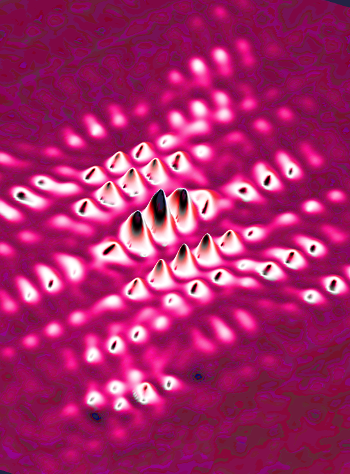Tiny sensor for big breakthrough
 Australian researchers have unveiled an amazing molecular-scale electronic sensor.
Australian researchers have unveiled an amazing molecular-scale electronic sensor.
The sensor, which is significantly smaller and more efficient than conventional counterparts, marks a major leap forward in the field of piezoresistors.
Piezoresistors are commonly employed to detect vibrations in electronic devices, automobiles, medical equipment, aviation, and space applications.
They are integral to functions like step counting in smartphones and airbag deployment in cars, as well as implantable pressure sensors in medical devices.
Under the guidance of Dr Nadim Darwish from Curtin University, Professor Jeffrey Reimers from the University of Technology Sydney, Associate Professor Daniel Kosov from James Cook University, and Dr Thomas Fallon from the University of Newcastle, a national research initiative has yielded a piezoresistor approximately 500,000 times smaller than the width of a human hair.
Dr Darwish says the innovative device converts force or pressure into an electrical signal and finds applications in various aspects of daily life.
“Because of its size and chemical nature, this new type of piezoresistor will open up a whole new realm of opportunities for chemical and biosensors, human-machine interfaces, and health monitoring devices,” Dr Darwish said.
“As they are molecular-based, our new sensors can be used to detect other chemicals or biomolecules like proteins and enzymes, which could be game-changing for detecting diseases.”
The tiny piezoresistor consists of a single bullvalene molecule, which, when mechanically strained, undergoes a transformation into a different-shaped molecule. This transformation alters electrical flow by changing resistance, with the different chemical forms referred to as isomers.
“The different chemical forms are known as isomers, and this is the first time that reactions between them have been used to develop piezoresistors,” Dr Fallon said.
“We have been able to model the complex series of reactions that take place, understanding how single molecules can react and transform in real time.”
Being able to electrically detect changes in the shape of a reacting molecule, back and forth, in just about 1 millisecond, allows for the detection of molecular shapes based on their electrical conductance, presenting a fresh concept in chemical sensing.
The experts say that understanding the connection between molecular shape and conductivity will enable the determination of fundamental properties of connections between molecules and attached metallic conductors.
More details are accessible here.







 Print
Print